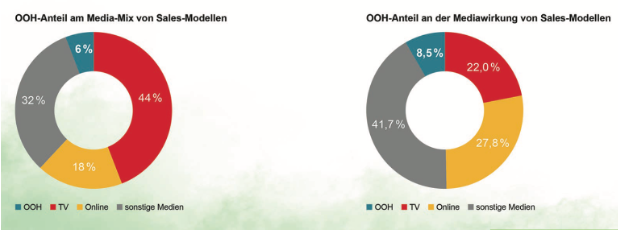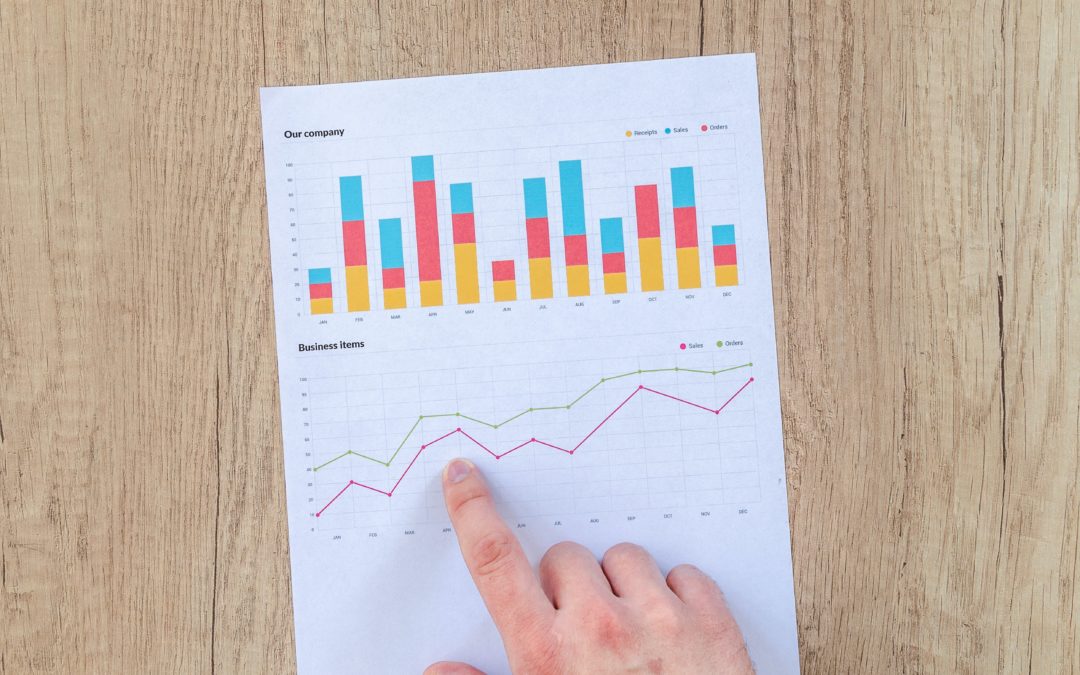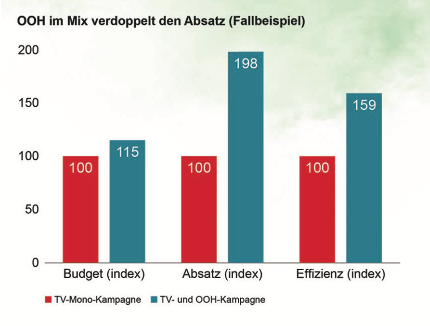How nice it would be if your out-of-home advertising continued to be anchored in the minds of the contact persons reached even two/three weeks after the end of the advertising campaign. No problem because out-of-home advertising can do that and much more!
As the “ROI-Study OOH 2020” from the Fachverband für Aussenwerbung (FAW e.V.) proves, the effect of out-of-home is absolutely sustainable, because: The half-life, a parameter that indicates after how many weeks half of the communication effect is still present, can even last up to 12 weeks, depending on the industry! Before we knock your socks off with more facts, a few key data on the study itself.
The effect and efficiency of OOH is clearly proven
The goal of the “ROI Study OOH 2020” was to prove the impact and efficiency of out of home in the media mix. Spoiler: Success proven! The study examined the impact of out-of-home advertising on the sale of brands and products in terms of ROI (Return On Investment). This means that the advertising expenditure was put in relation to the measured advertising success and thus it was calculated how many euros of revenue were generated per euro invested in advertising expenditure through OOH. A total of 234 cross-media campaigns were used for the study, covering both FMCG (fast moving consumer goods) and NON-FMCG market segments.
Outdoor advertising: media spending vs. media impact
Three different factors influence the sale of products in the FMCG and NON-FMCG segments: Baseline (impact factors that cannot be influenced, such as seasonal effects), Marketing (price, product, distribution, promotion) and Media (impact contribution of all media). It is astonishing that “Media”, with a 29.5% share, contributes almost one third to the sales of the products in general, of which, however – since the effect and efficiency of outdoor advertising was once again proven with this study – only a small part of the media spending is attributable to out-of-home.

In order to determine the impact contribution precisely, the actual media share of 29.5% in the graph was scaled to 100% to determine the correlation between media spending and media performance.
Although on average only 6% of total media expenditure is attributable to outdoor advertising, this advertising medium contributes a share of 8.5% to the media impact. This is a significantly high contribution that outdoor advertising makes to relevant sales! The graphic also shows how important a healthy media mix is. A sensible distribution of media spendings among the individual advertising segments is important in order to achieve the best possible and longest-lasting advertising impact. As the following example also proves:
OOH in the media mix doubles sales
Adding OOH advertising to the media mix while slightly increasing the media budget by 15% leads to extraordinary – positive – effects of your advertising campaign. If you rely on just one advertising medium, in this case a TV mono campaign, you should not expect any great leaps. Only the media mix of TV and OOH advertising ensures that efficiency (i.e. the ratio of budget & sales) increases by 59% and sales are 98% higher than in campaigns without OOH advertising. Yes, we agree with you: Wow! So, this example clearly proves that a media mix achieves the best results.
Achieve enormous ROI efficiency with Out-Of-Home advertising
The impact of outdoor advertising – as part of a cross-media campaign – scores again on these metrics, because Out-Of-Home also has a positive impact on return on investment (ROI). As a reminder, ROI puts advertising expenditure in relation to the measured advertising success. For example, the study found that every euro of media expenditure invested in out of home advertising (based on the premise of sales) generates an average of €4 in revenue.
In the case of consumer goods such as soft drinks, each euro invested even generated 8 times that amount in sales, and in telecommunications the figure was well over €9. Depending on the industry, the use of a media mix, i.e. the addition of out-of-home advertising, has thus been shown to increase ROI efficiency.
Half-life of out-of-home advertising: Stays in the mind for a long time
Out of sight, out of mind? Not with out-of-home advertising, because as the study also shows, the so-called “carry-over” or “depot effect” is enormous. To explain: This anglicism describes the – quite normal – fact that campaigns have a diminishing effect after they have ended. What surprises readers at this point is that the OOH effect is still 64% on average two weeks after the end of the campaign – and this puts the media effect of out-of-home advertising on a par with the “online” medium. Depending on the sector, this advertising after-effect of out-of-home advertising can be proven to be even longer or higher. Particularly in the case of strongly established brands or companies that have caused a stir with outdoor advertising over several booking periods and in combination with a very good advertising creation, the carry-over effect can even last up to 12 weeks afterwards.
As the study “ROI Study OOH 2020” proves, OOH advertising is a very powerful means of communication and contributes to the visibility of an advertisement demonstrably but above all sustainably. The positive impact on ROI of incorporating out-of-home advertising – i.e., a cross-media campaign – was proven. It was also confirmed that OOH makes a significant contribution to media impact.
Finally, to echo the basic tenor of the study:
If an advertising medium stands alone, such as when a “Tv mono campaign” is used alone, advertising achieves solid results. But it is only in the media mix, i.e. by adding OOH, that your advertising campaign can work at all levels and only then becomes truly efficient. So, if you want to be “in the mind” of your target audience – especially in the long term – go for out-of-home advertising in the media mix.
We will be happy to advise you!


